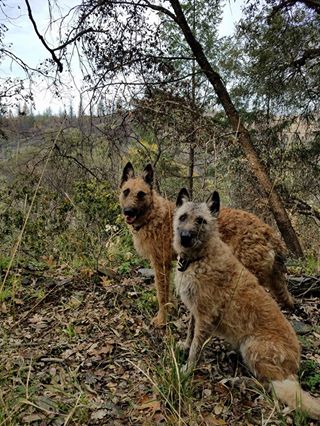
19th century Belgian flatlands had the best type of soil for growing the plant, and the flax that grew there was of such high quality that growing the crop became a local industry. Flax fields sprouted up everywhere around Flanders, and it was then that the Belgian Laekenois became as important to the people growing the crops as the soil in which the crops grew. Opportunistic thieves were a constant problem, and the Laekenois’ ferocious bark and no-nonsense work ethic kept bandits at bay.
Even now, the production of linen is a fastidious process that has changed little since the times of the Egyptians. This has always made keeping, growing and processing the crop very expensive. Nonetheless, the Flanders region became one of the greatest producers of the crop worldwide. In hopes of selling the crops themselves, it was not uncommon for robbers to move onto fields and attempt small harvests. The alert and serious Laekenois not only guarded against this, they could also double as a herding dog, moving sheep and cattle that had wandered into flax fields by accident. This helped keep a farmer’s losses to a minimum.
The self sufficient Laekenois was content to wander his or her perimeter throughout the day and make sure that all was well. When not guarding flax fields during the day, it was not uncommon for them to spend a couple hours per night guarding herds on a farm as well. The Laekenois was a loyal breed not only to their master but to the animals they protected. Although they did not hesitate to nip at the heels of one of their own animals to get them moving, they certainly did not allow any other type of animal to do the same. This strong loyalty in turn earned them the devotion of their owners and the families that kept them. They even earned the admiration of royalty who often took up the breed themselves.
There was no doubt the Laekenois was the best breed for guarding flax fields. They had a great stamina and were intimidated by very little. This is eventually what brought them into work as police and army dogs. As a working dog, they are always at their best when they are given some sort of task to carry out. Though they have an independent streak, they still love being able to please their owner. To this day, the Flanders region is sill growing flax and is greatly renowned for the quality of linen produced. Though fairly modernized, the Laekenois can still be found in the region at times guarding fields or other types of indigenous crops.
